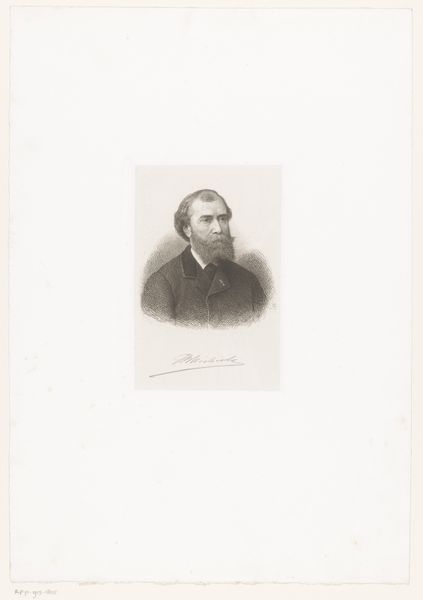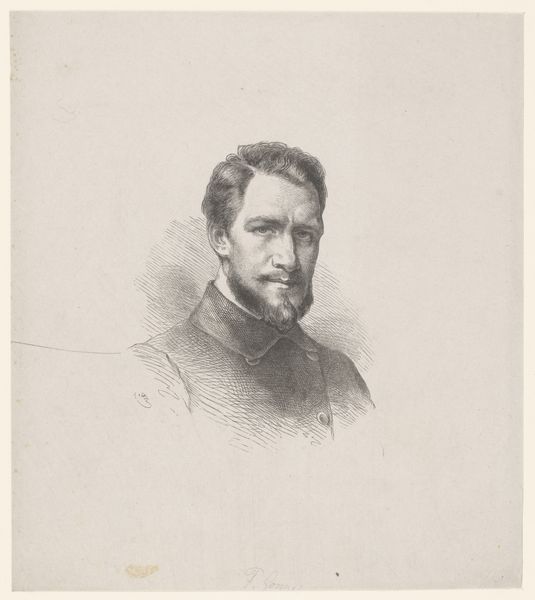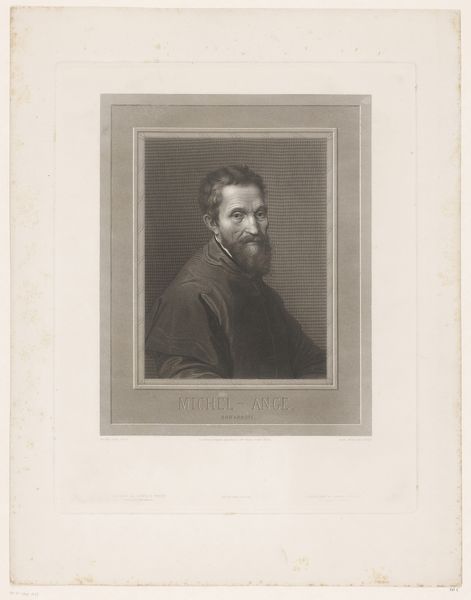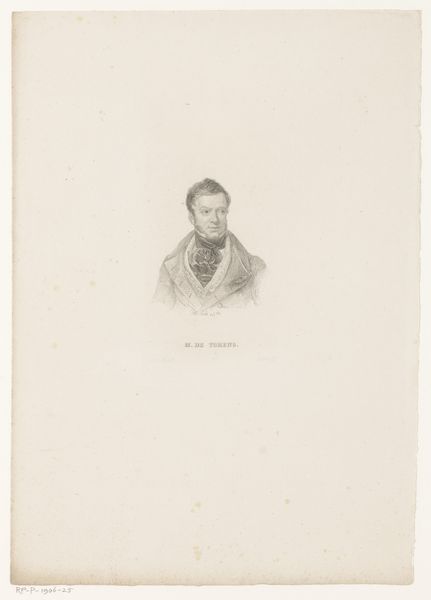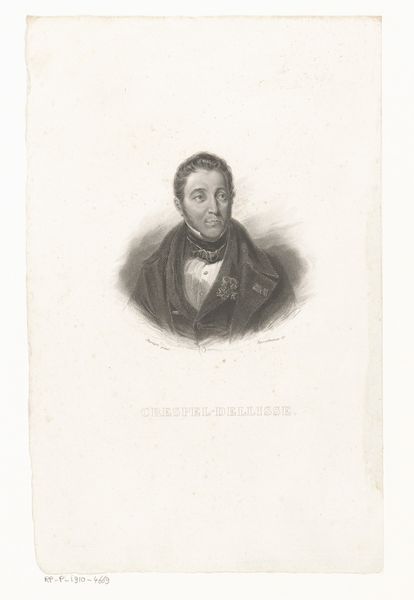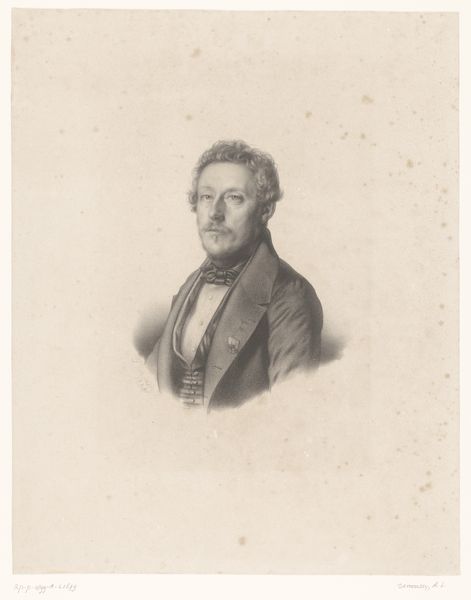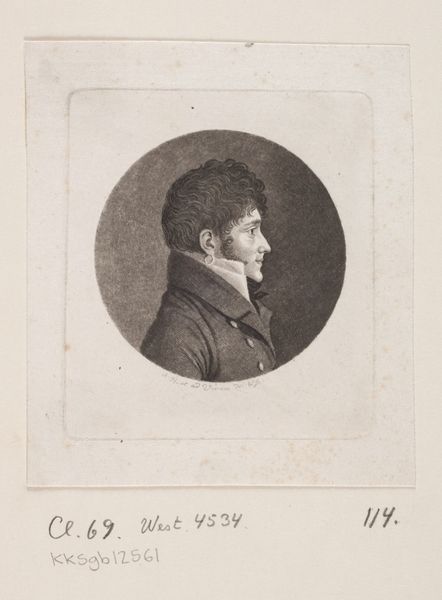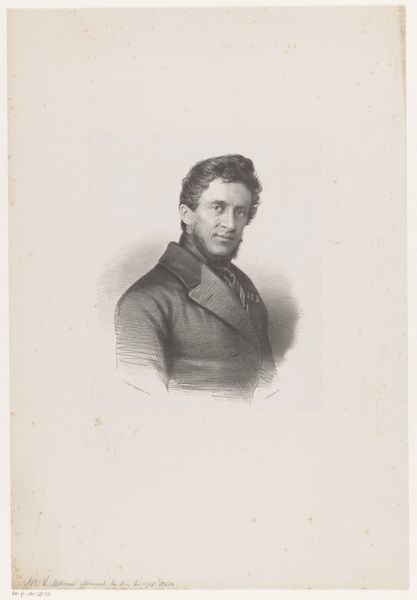
drawing, paper, pencil, graphite
#
portrait
#
drawing
#
paper
#
romanticism
#
pencil
#
graphite
#
realism
Dimensions: height 245 mm, width 160 mm
Copyright: Rijks Museum: Open Domain
Curator: This is Johann Wilhelm Kaiser's "Portret van Janus Secundus," crafted in 1839, housed here at the Rijksmuseum. It’s a drawing using graphite and pencil on paper. Editor: The softness is the first thing I notice, almost an ethereal quality created by the pencil strokes. The shading gives depth, but it also softens the features, imparting a sense of introspective calm. Curator: Janus Secundus, a celebrated Neo-Latin poet of the 16th century, embodies the Renaissance humanist spirit—the pursuit of knowledge and the celebration of human potential. The choice of pencil perhaps echoes the scholarly nature of the subject, connecting to the act of writing and study. Editor: Indeed, note the strategic composition – the sitter is situated behind a book and holding some type of receptacle or box. These act as planes and grounds within the frame while guiding your eyes towards the main subject. Curator: Exactly, that box in his hand hints at an untold narrative. Janus Secundus died young, which is tragic, so maybe the portrait encapsulates themes of remembrance or contemplation on mortality. The slightly averted gaze could indicate his inner thoughts, dreams, and poetry. Editor: From a technical perspective, consider Kaiser’s expert use of shading to mold the collar and drapery; you could interpret these artistic liberties as the artist making the best of what’s visible. Curator: It’s a delicate dance, balancing realism and idealization within the Romantic framework. By presenting Secundus in a meditative pose, the image resonates with longing and nostalgia—values prized by Romanticism. It reminds viewers of our shared cultural heritage. Editor: It’s compelling to consider how the starkness of the drawing lends itself to an age defined by its obsession with progress—to make a historical figure look more real through subtle artfulness. Curator: The beauty lies in its invitation for the viewer to ponder the past and their relationship with the world through art. Editor: And that dialogue between what we see and what we perceive continues.
Comments
No comments
Be the first to comment and join the conversation on the ultimate creative platform.
